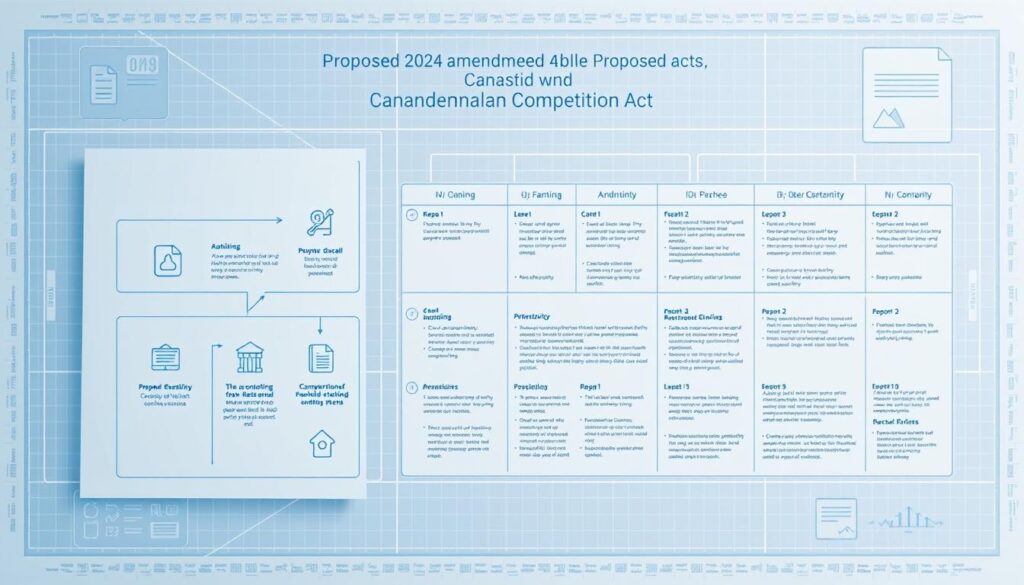Table of Contents
Have you ever wondered how businesses in Canada maintain fair competition and adhere to legal standards? The Competition Act of Canada plays a crucial role in promoting a level playing field for all businesses. This Act is a cornerstone of fair business practices, ensuring that companies operate within legal boundaries and uphold ethical standards.
In recent years, the Competition Act has undergone significant amendments, with key changes in 2022, 2023, and 2024. These updates reflect the evolving nature of business practices and the need for stronger enforcement mechanisms. The Act now includes stricter penalties for non-compliance, such as increased administrative monetary penalties and criminal penalties for certain offenses.
Understanding the Competition Act is essential for legal professionals and businesses operating in Canada. It provides a framework for fair competition, ensuring that all parties can thrive without unfair advantages. Stay informed about the latest developments and how they impact your business practices.
Overview of the Competition Act of Canada
The Competition Act is a cornerstone of fair business practices in Canada, designed to ensure a level playing field for all enterprises. Its primary purpose is to maintain competitive markets, promoting efficiency and fair pricing while controlling merger activities. The Act sets clear standards for business conduct, ensuring ethical practices across industries.
The scope of the Act extends to various aspects, including pricing practices and merger notifications. It emphasizes fair competition, making compliance essential for all businesses operating in Canada. Key terms within the Act include “provision” and “agreement,” which are crucial for understanding its framework. Recent amendments have refined these definitions, adding new policy layers to address evolving business practices.
The Act’s provisions are designed to prevent anti-competitive behaviors, such as price-fixing agreements and deceptive marketing practices. Businesses must ensure their actions align with these regulations to avoid penalties. By promoting transparency and fairness, the Competition Act fosters an environment where innovation and consumer trust can thrive.
Historical Context and Legislative Evolution
The Competition Act of Canada has a rich history that shapes its current framework. Understanding its origins provides insight into its role in modern business regulation.
Key Milestones in Competition Law
The journey began with the Anti-Combines Act in 1889, the first post-industrial revolution antitrust law globally. This laid the groundwork for fair business practices. Over the years, the Act evolved, with significant amendments in 2009 and 2010 that introduced administrative penalties and redefined criminal offenses.
Early Enforcement and Regulatory Challenges
Enforcement faced challenges, especially in the mid-20th century. The Competition Tribunal, established to review mergers and practices, played a crucial role. Despite hurdles, the framework grew, incorporating digital markets and enhancing transparency.
| Year | Key Development | Impact |
|---|---|---|
| 1889 | Anti-Combines Act | First antitrust law |
| 1986 | Competition Act Enacted | Replaced earlier laws |
| 2009 | Amendments Introduced | Strengthened enforcement |

“The 1969 report by the Economic Council of Canada was pivotal, leading to significant legislative reforms.”
These changes reflect the Act’s adaptability, ensuring it remains effective in a changing business landscape. Legal experts play a key role in navigating these regulations.
Deep Dive into the 2022 Amendments
The year 2022 marked a significant milestone in the evolution of business regulations in Canada with the introduction of major amendments to the Competition Act. These changes, which came into effect on June 23, 2022, were the first substantial reforms in over a decade, aiming to address emerging challenges in the business landscape.
Wage-Fixing and No-Poach Provisions
One of the most notable changes was the criminalization of wage-fixing and no-poach agreements. These practices, which unfairly restrict workers’ mobility and suppress wages, are now prohibited under the law. Businesses found engaging in such activities face severe penalties, including criminal charges. This provision ensures fair competition in the labor market, protecting both employees and employers from unfair practices.
Expansion of the Abuse of Dominance Framework
The amendments also broadened the criteria for determining abuse of dominance. Companies now face stricter scrutiny if they abuse their market position to stifle competition. The updated framework makes it easier for regulatory bodies to identify and address anti-competitive behaviors. This change promotes a fairer marketplace, encouraging innovation and consumer choice.

The 2022 amendments introduced increased penalties for non-compliance, including higher administrative monetary penalties and criminal penalties for certain offenses. These changes underscore the government’s commitment to enforcing fair business practices and maintaining a competitive economy.
“These amendments reflect a proactive approach to addressing modern business challenges, ensuring that the legal framework remains robust and effective.”
By strengthening enforcement mechanisms and expanding the scope of prohibited practices, the 2022 reforms have set a new standard for fair competition, benefiting both businesses and consumers alike.
Insights on the 2023 Amendments
2023 brought significant updates to the Competition Act, enhancing regulatory powers and reshaping merger guidelines. These changes reflect a commitment to stronger enforcement and transparency in business practices.
Enhanced Information Gathering Powers
Regulators gained new tools to collect information, enabling them to conduct more thorough investigations. This includes the ability to compel the production of documents and data, which helps in identifying anti-competitive behaviors more effectively.
Repeal of the Efficiencies Defense
A major shift occurred with the repeal of the efficiencies defense, which had allowed companies to justify mergers by citing efficiency gains. This change ensures that mergers are evaluated more rigorously, focusing on their impact on competition rather than potential efficiencies.
| Amendment | Impact |
|---|---|
| Compulsory Information Gathering | Strengthens investigative capabilities |
| Repeal of Efficiencies Defense | Alters merger evaluation criteria |

These amendments also introduced broader civil review provisions, allowing private parties to take legal action against deceptive marketing and anti-competitive agreements. This expansion of enforcement mechanisms ensures that businesses and consumers alike can hold companies accountable for unfair practices.
“The 2023 amendments mark a significant step forward in promoting transparency and fair competition, providing regulators with the tools they need to maintain a level playing field.”
By focusing on compliance and transparency, these changes encourage businesses to operate ethically, fostering a competitive and innovative market environment.
Examining the 2024 Amendments
The most recent updates to the Competition Act came into effect on June 20, 2024, marking a significant evolution in regulatory enforcement. These amendments introduce new penalties, structural remedies, and expand private enforcement rights, reshaping the legal landscape for businesses and consumers alike.
New Penalties and Structural Changes
The 2024 amendments introduced substantial changes to enforcement mechanisms. Administrative monetary penalties now reach up to $10 million for first offenses and $15 million for subsequent ones. Additionally, penalties can be based on the benefit derived from anti-competitive conduct or 3% of a company’s global revenues. Structural remedies, such as asset divestitures, are now more commonly imposed to address anti-competitive effects. These changes aim to deter non-compliance and promote a fair market environment.
Private Applications and Remedies
A significant shift in the 2024 amendments is the expansion of private party enforcement. Individuals and businesses can now seek remedies for anti-competitive conduct, effective June 20, 2025. This includes challenging mergers and agreements that harm competition. Private litigants can pursue damages, aligning with broader regulatory goals and fostering innovation. The Competition Tribunal now allows private applications in the public interest or when a business is directly affected, enhancing accountability and transparency in the market.

These amendments underscore the government’s commitment to robust enforcement and fair business practices, ensuring a competitive and innovative economy.
The Competition Act of Canada and Fair Business Practices
Fair business practices are the backbone of a thriving economy, and the Competition Act plays a pivotal role in ensuring this balance. By fostering an environment where businesses can operate ethically and consumers are protected, the Act promotes sustainable growth and innovation.
Private Party Enforcement and Market Impact
Recent amendments to the Competition Act have empowered private parties, including both consumers and businesses, to take legal action against deceptive marketing and anti-competitive agreements. This shift not only strengthens enforcement but also ensures that everyone can hold companies accountable for unfair practices.
The Act addresses issues like misleading advertising and restrictive trade practices, ensuring transparency and fairness in the market. For instance, businesses are now more cautious about engaging in deceptive marketing, as the consequences of non-compliance are severe. These changes have led to a more level playing field, where innovation and consumer trust can flourish.

To adapt to these regulations, many companies have revised their marketing strategies and business agreements. Legal experts often advise businesses to conduct regular audits to ensure compliance with the Act’s provisions.
The benefits of this clear legal framework are twofold. Consumers gain protection from misleading information, while businesses enjoy a competitive environment that encourages innovation. This dual protection ensures that the market remains dynamic and fair for all participants.
Enforcement Mechanisms and Regulatory Bodies
Enforcement of the Competition Act is carried out by two key bodies: the Competition Bureau and the Competition Tribunal. These entities work together to ensure fair business practices and protect consumers.
Role of the Competition Bureau
The Competition Bureau serves as the primary law enforcement agency responsible for investigating anti-competitive activities. It operates independently, ensuring impartial enforcement of the Competition Act. The Bureau’s main duties include:
- Investigating mergers, acquisitions, and other business practices that may hinder competition.
- Reviewing agreements between competitors to prevent collusion.
- Enforcing laws against deceptive marketing practices.
The Commissioner of Competition leads the Bureau, overseeing all enforcement activities and ensuring compliance with the Act.
Tribunal Powers and Judicial Oversight
The Competition Tribunal is a quasi-judicial body that hears cases related to anti-competitive conduct. Its powers include:
- Issuing cease and desist orders to halt anti-competitive practices.
- Imposing administrative monetary penalties, which can reach up to $10 million for violations.
- Ordering divestitures to restore competition in concentrated markets.
Judicial oversight ensures that Tribunal decisions are fair and in line with legal standards, providing an additional layer of accountability.
These enforcement mechanisms are crucial for maintaining a fair marketplace. They protect both businesses and consumers by preventing monopolistic practices and promoting transparency.
Impact on Mergers and Anti-Avoidance Strategies
Recent amendments to the Competition Act have significantly reshaped how mergers are regulated, introducing stricter guidelines to prevent anti-competitive practices. These changes aim to ensure fair competition and protect consumer interests in the Canadian market.
Merger Notification and Structural Presumptions
The updated merger notification process now includes reverse onus measures, requiring companies to prove that their mergers will not harm competition. This shift places a higher burden on businesses to demonstrate compliance. Additionally, the introduction of strict post-closing challenge periods means regulators can review mergers for up to three years after they are completed, ensuring long-term compliance and fair market practices.
Long-Term Economic Implications
The amendments have introduced a presumption that significant increases in market concentration can lead to substantial lessening or prevention of competition. This means mergers that result in higher market concentration are now subject to greater scrutiny. Over time, this could lead to a more balanced competitive landscape, fostering innovation and consumer choice. However, businesses must adapt to these new regulations, potentially altering their merger strategies and structuring agreements to avoid anti-competitive outcomes.

These changes underscore the government’s commitment to maintaining a fair and competitive market, ensuring that mergers and acquisitions do not stifle competition or harm consumers.
Consumer Protection and Deceptive Marketing Regulations
Recent amendments to the Competition Act have introduced stronger measures to protect consumers from deceptive marketing practices, particularly focusing on greenwashing and misleading environmental claims. These changes aim to ensure transparency and fairness in the marketplace, safeguarding both consumers and ethical businesses.
Greenwashing and Misleading Advertising Provisions
One of the key provisions targets greenwashing, where companies make unsupported environmental claims. Under the new regulations, such claims now trigger “reverse onus” requirements, meaning businesses must prove their environmental claims are valid. This shift places the burden on companies to demonstrate the authenticity of their marketing.
Deceptive marketing practices are now subject to both civil and criminal penalties. For instance, under the criminal regime, individuals can face up to $200,000 in fines or imprisonment for up to one year. Corporations may incur penalties up to $10 million for the first offense and $15 million for subsequent ones. These penalties underscore the seriousness of misleading advertising.

The role of private applications has expanded, allowing individuals and businesses to take legal action against deceptive practices. This empowerment ensures that enforcement is not solely reliant on regulatory bodies, fostering a collective effort to maintain fair marketing standards.
Examples of misleading advertising include false performance representations and environmental claims. The Competition Bureau investigates such cases, sometimes requiring testimonies from individuals with significant evidence. Advertisements must not confuse “regular price” with “manufacturer’s suggested list price” unless supported by substantial sales data. The use of terms like “sale” or “special” is only permissible with genuine price reductions.
These measures promote transparency and protect consumer rights, ensuring that marketing practices are truthful and fair. By addressing deceptive marketing, the Competition Act fosters a trustworthy and competitive market environment.
Conclusion
In conclusion, the Competition Act has undergone significant transformations through its 2022, 2023, and 2024 amendments, each refining how businesses operate and compete in Canada. These updates have strengthened enforcement mechanisms, expanded private enforcement rights, and introduced stricter penalties to deter anti-competitive behaviors. The Act now addresses issues like wage-fixing, deceptive marketing, and merger regulations more effectively, ensuring a fair marketplace that fosters innovation and protects consumers.
For those seeking deeper insights or guidance on navigating these changes, consulting resources like the Competition Bureau’s recommendations or expert legal advice from Canadian legal experts can provide valuable perspectives and strategies. Staying informed about these legislative developments is crucial for both legal practitioners and businesses aiming to comply and thrive under the updated regulations.



